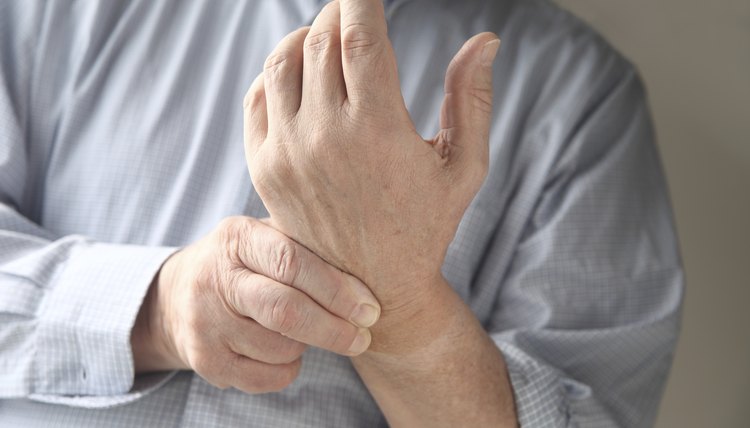What Are the Four Types of Movable Joints?

An important part of understanding the physiology of the human body is learning the difference between the four major joint types. Additionally, there are two lesser-known joint types that are important to know for a complete understanding of human joints.
Ball-and-socket

Karl Rosencrants/iStock/Getty Images
A ball-and-socket joint consists of one bone with a rounded end and and another cupped bone that it fits into, allowing a full range of motion. The shoulder and hip are both ball-and-socket joints.
Hinge

Karl Rosencrants/iStock/Getty Images
Just like a door hinge, hinge joints in the human body facilitate a simple angular moment, allowing extension but not rotation. Elbows, knees, and ankles are examples of hinge joints.
Pivot

Karl Rosencrants/iStock/Getty Images
In a pivot joint, the rounded end of a single bone fits into the ring of a tendon, allowing rotation. This occurs, for instance, at the base of the neck.
Gliding

Karl Rosencrants/iStock/Getty Images
A gliding joint is characterized by bones that slide or twist against each other but cannot move in a circular direction. Examples include the wrists, ankles, and vertebrae.
Other

Karl Rosencrants/iStock/Getty Images
There are two lesser-known types of joints in addition to the four major ones: condyloid joints and saddle joints. Condyloid joints, such as the joints in between the fingers, allow angular movement but not rotation. The saddle joint is a complex interaction between two complementary bones and only occurs at the base of the thumb.
References
Writer Bio
Jake Robinson is a journalist who has covered everything from murder trials and chemical spills to school board meetings and bake sales. His articles have appeared in "The Miscellany News" and "The Morning Times." Robinson has a Bachelor of Arts in political science from Vassar College
